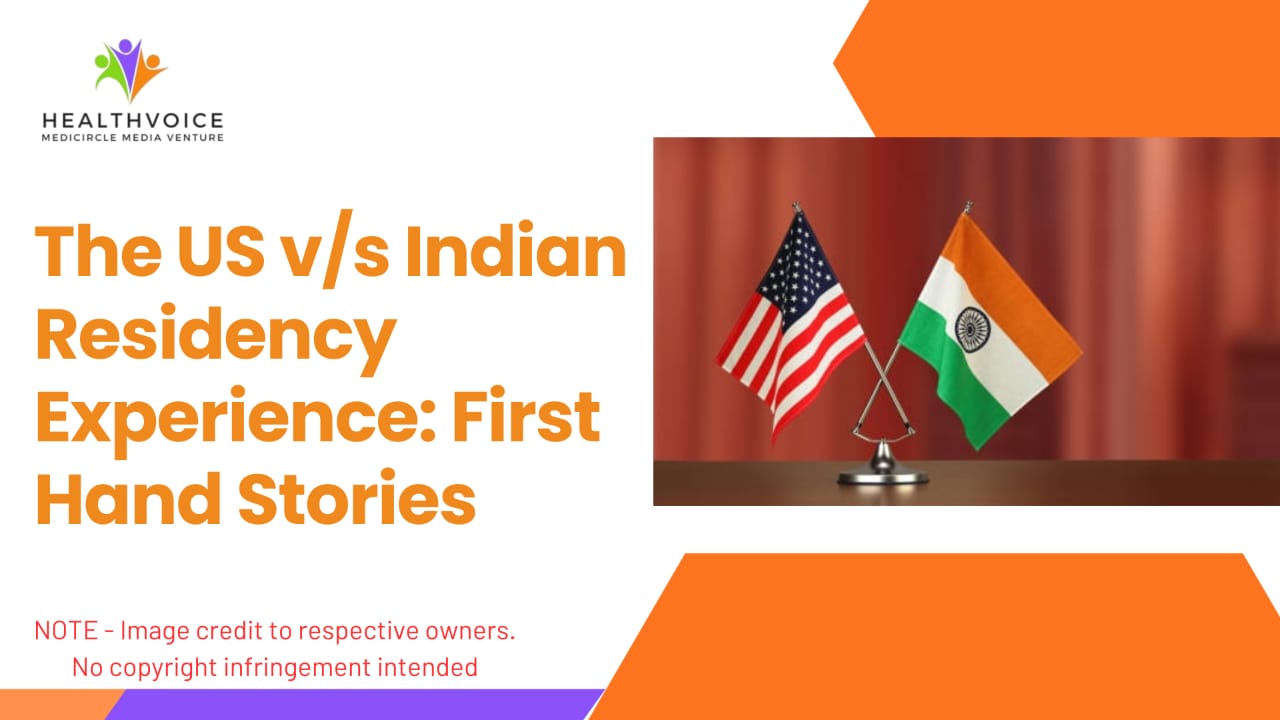The US v/s Indian Residency Experience: First Hand Stories
This article compares medical residency in India and the US, highlighting differences in training style, work culture, challenges and rewards to help graduates make informed career decisions.

For countless Indian medical graduates, the decision of where to complete their residency training is one of the most significant they will ever make. This choice goes far beyond geography; it represents a selection between two fundamentally different approaches to medical education and professional development. One route keeps you rooted in the familiar healthcare landscape of home, while the other offers a chance to train within a vastly different system abroad.
The goal here is not to crown one system as the winner. Instead, it is about peeling back the layers on each option, looking honestly at the day to day realities, the trade-offs and the personal growth each path fosters. By listening to the experiences of those who have been there, we can better understand the fabric of each journey; woven with threads of hard work, adaptation and profound learning.
US residency experience:
To many doctors, securing a residency position in the United States is seen as reaching the gold standard of clinical training. The initial barrier is the United States Medical Licensing Examination (USMLE), a multi-step exam that demands intense focus and preparation. Those who succeed find themselves in a world defined by its structure.
The American system operates on a foundation of strict protocols. Medical decisions are deeply rooted in evidence based guidelines, with a heavy reliance on the latest research and institutional policies. While residency hours are long everywhere, US programs must adhere to duty hour limits, a rule created to protect residents from burnout; even if the on the ground experience remains incredibly demanding.
A major advantage is exposure to a remarkably diverse patient population and health conditions, alongside access to some of the world's most advanced medical technology. The flip side involves learning to navigate a complex web of health insurance rules and hospital bureaucracy, which can be a steep learning curve for international medical graduates. Beyond the hospital, there is the personal challenge of adapting to a new culture, far from the support network of family and friends.
Financially, the long term rewards are considerable. However, the road there is built on years of intense effort, occasional loneliness and the continuous task of acclimating to a new way of life.
Residency in India:
Training in India is frequently described as a trial by fire. The intensity comes from the overwhelming number of patients. It is not unusual for a large public hospital in a major Indian city to handle a patient load in one day that would take a week elsewhere. This massive exposure is the Indian system's greatest asset. Doctors develop sharp diagnostic instincts and practical skills, learning to operate effectively even when resources are stretched.
The teaching style is often more personal and less formal than in the US, though the hierarchy between senior and junior doctors remains clear. Education is hands-on and immediate; you learn by doing, often seeing a breadth of medical issues that textbooks can only describe. You might encounter rare conditions multiple times in your first year.
This comes with significant sacrifices. Officially mandated work hour limits often exist only on paper, with marathon 36 hour shifts being a common reality. The pressure is relentless, infrastructure can be strained and focusing on personal well-being can feel like an impossible task.
Yet, this path is filled with its own powerful rewards. There is a deep sense of purpose that comes from serving your community. There is the comfort of practicing medicine in your own culture, close to family, with an innate understanding of the public health challenges facing the population. The pay during training may be lower, but the real world experience is immense.
Choosing your path:
So, which way should you go? There is no universal answer. The best choice depends entirely on who you are and what you value most in your career and your life.
The US system provides a structured educational environment, advanced tools and strong financial prospects. The Indian system offers unmatched clinical experience, the familiarity of home and the chance to make a direct impact in your own country. Neither is inherently better; they are just different.
The most important thing you can do is make a choice that feels right for you. Ask yourself tough questions: What kind of doctor do I want to become? What kind of work culture helps me do my best? What am I ready to give up and what do I need to keep for my own health and happiness?
This focus on well-being is central, because a doctor's ability to care for others starts with their own health. This journey, whether it begins in India or the US, is a major step in a life dedicated to medicine. No matter which direction you choose, it will be your dedication, empathy and strength that ultimately define your success.
#healthvoice #MedicalResidency #DoctorsJourney #ResidencyInIndia #USResidency #MedicalTraining #FutureDoctors #GlobalHealthcare #DoctorLife #MedicalEducation #HealthcareSystems #IndianDoctors #MedicalCareer #ResidentDoctors #DoctorChallenges #HealthcareAbroad #DoctorDreams #MedicalGrowth
